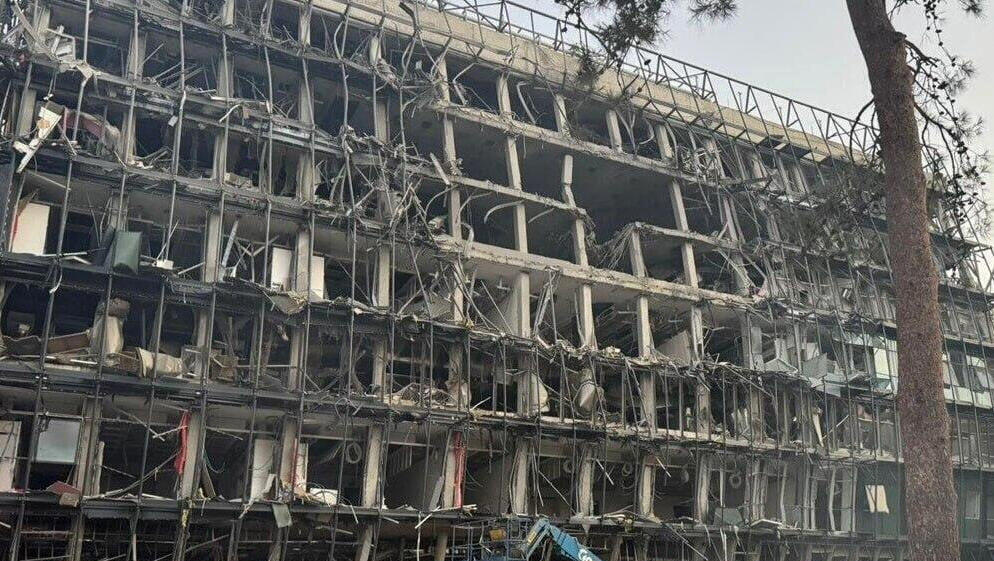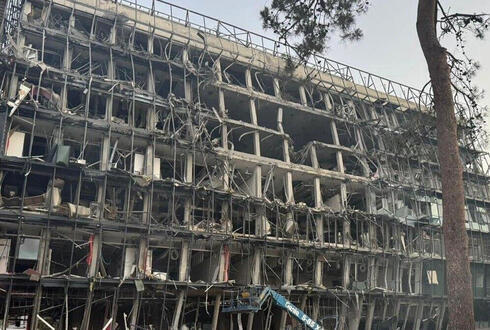
Israel’s Weizmann Institute reels from Iranian attack, faces $300 million hole
Prof. Chen calls for emergency funding as 60% of foreign researchers evacuate and dozens of labs shut down.
Weizmann Institute President Prof. Alon Chen estimates that property tax compensation will cover at most 1 billion shekels (approximately $300 million) of the estimated 1.5–2 billion shekels ($450–600 million) in damage caused by the two Iranian missiles that struck the institute.
Prof. Chen explained: “There is no compensation mechanism for knowledge and research. If we’re optimistic, property tax might cover 50% of the damage, but we’ll still need to raise about another 1 billion shekels ($300 million). We have already had to exceed our budget framework and have diverted tens of millions toward reconstruction. Time is critical, we’ve asked for advances to help with this.”
Chen spoke during a tour of the damaged sites by members of the Knesset Science and Technology Committee, led by MK Yasir Hujeirat. He noted: “Even in terms of equipment, there’s no adequate compensation solution. For example, if we bought an advanced microscope for 5 million shekels ($1.5 million), it would be valued for property tax at only 200,000 shekels ($60,000) due to depreciation, and that gap doesn’t cover the loss of knowledge and capabilities.”
About 112 buildings on the institute’s campus were damaged, including 65 scientific and research service buildings. Five buildings sustained severe damage, with one collapsing entirely. Dozens more suffered varying degrees of damage. Critical infrastructure was shut down, and 52 research laboratories, along with six service labs in the Department of Biological Research Infrastructure, were taken out of operation.
Prof. Chen added: “Current government support covers only 20%–25% of our budget. We provide full scholarships and don’t charge tuition. About 40% of our budget comes from a permanent fund built from patent revenues and philanthropy, while another 30% comes from the scientists’ own research grants. This unique model sustains the institute, but now it’s under threat. We have no dedicated government budget for development or equipment acquisition, everything relies on donations, which is an enormous burden.”
He noted: “The institute’s annual budget is 4 billion shekels ($1.2 billion), and we’re considered the leading institution in Europe for research funding success, five times the European average.”
According to Prof. Chen, “About 60% of our international researchers left when the Iranian attack began, but we believe they’ll return as soon as possible.” He added: “Before the war, we were working to double our research areas. We currently run 300 research groups, but physical limitations prevent further growth. This is a vital national interest: the state must either double the Weizmann Institute’s capacity or establish another research institution. Every dollar invested here returns tenfold to the economy.”
MK Yasir Hujeirat, chair of the Science and Technology Committee, said: “It’s not for nothing that they saw you as a pillar, and we see you that way too. We will work tirelessly to support you.”
ve buildings sustained severe damage, with one collapsing entirely. Dozens more suffered varying degrees of damage. Critical infrastructure was shut down, and 52 research laboratories, along with six service labs in the Department of Biological Research Infrastructure, were taken out of operation.Prof. Chen added: “Current government support covers only 20%–25% of our budget. We provide full scholarships and don’t charge tuition. About 40% of our budget comes from a permanent fund built from patent revenues and philanthropy, while another 30% comes from the scientists’ own research grants. This unique model sustains the institute, but now it’s under threat. We have no dedicated government budget for development or equipment acquisition, everything relies on donations, which is an enormous burden.”
He noted: “The institute’s annual budget is 4 billion shekels ($1.2 billion), and we’re considered the leading institution in Europe for research funding success, five times the European average.”
According to Prof. Chen, “About 60% of our international researchers left when the Iranian attack began, but we believe they’ll return as soon as possible.” He added: “Before the war, we were working to double our research areas. We currently run 300 research groups, but physical limitations prevent further growth. This is a vital national interest: the state must either double the Weizmann Institute’s capacity or establish another research institution. Every dollar invested here returns tenfold to the economy.”
MK Yasir Hujeirat, chair of the Science and Technology Committee, said: “It’s not for nothing that they saw you as a pillar, and we see you that way too. We will work tirelessly to support you.”
